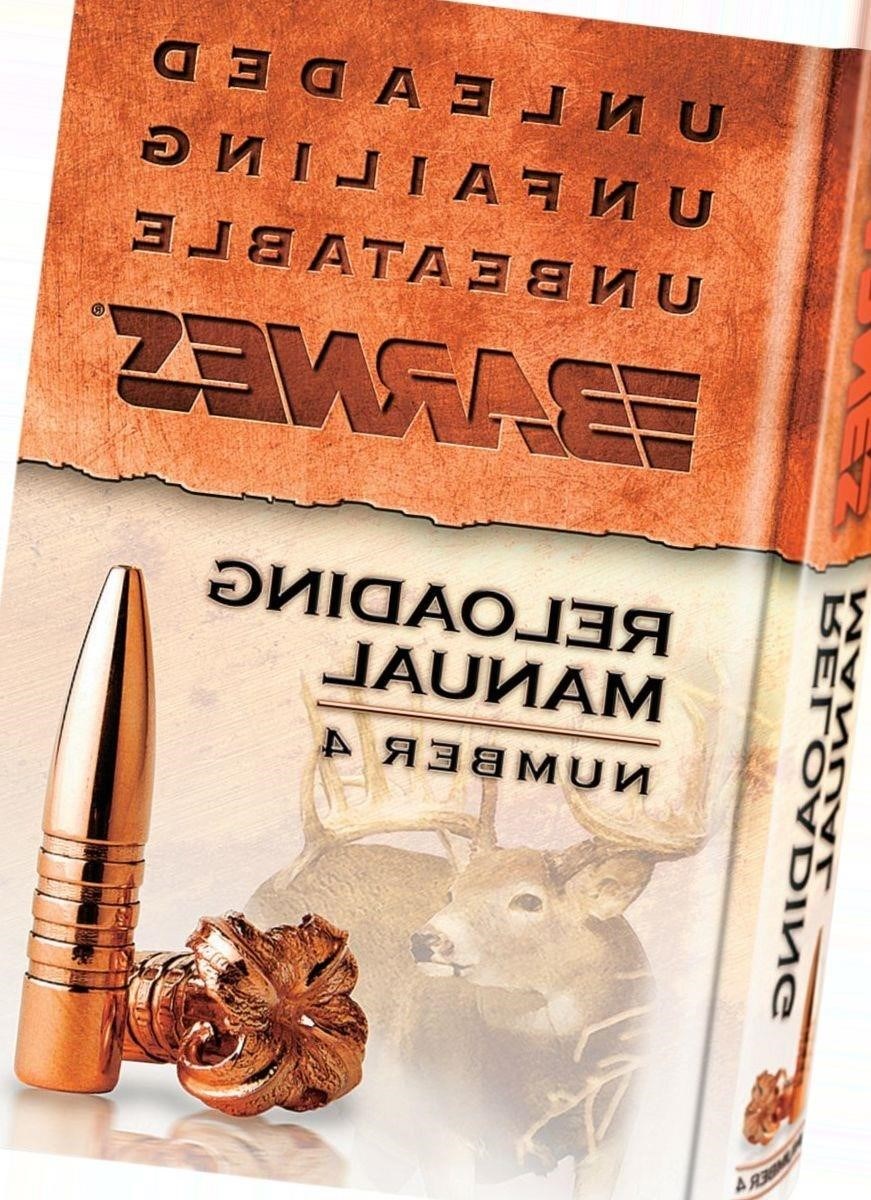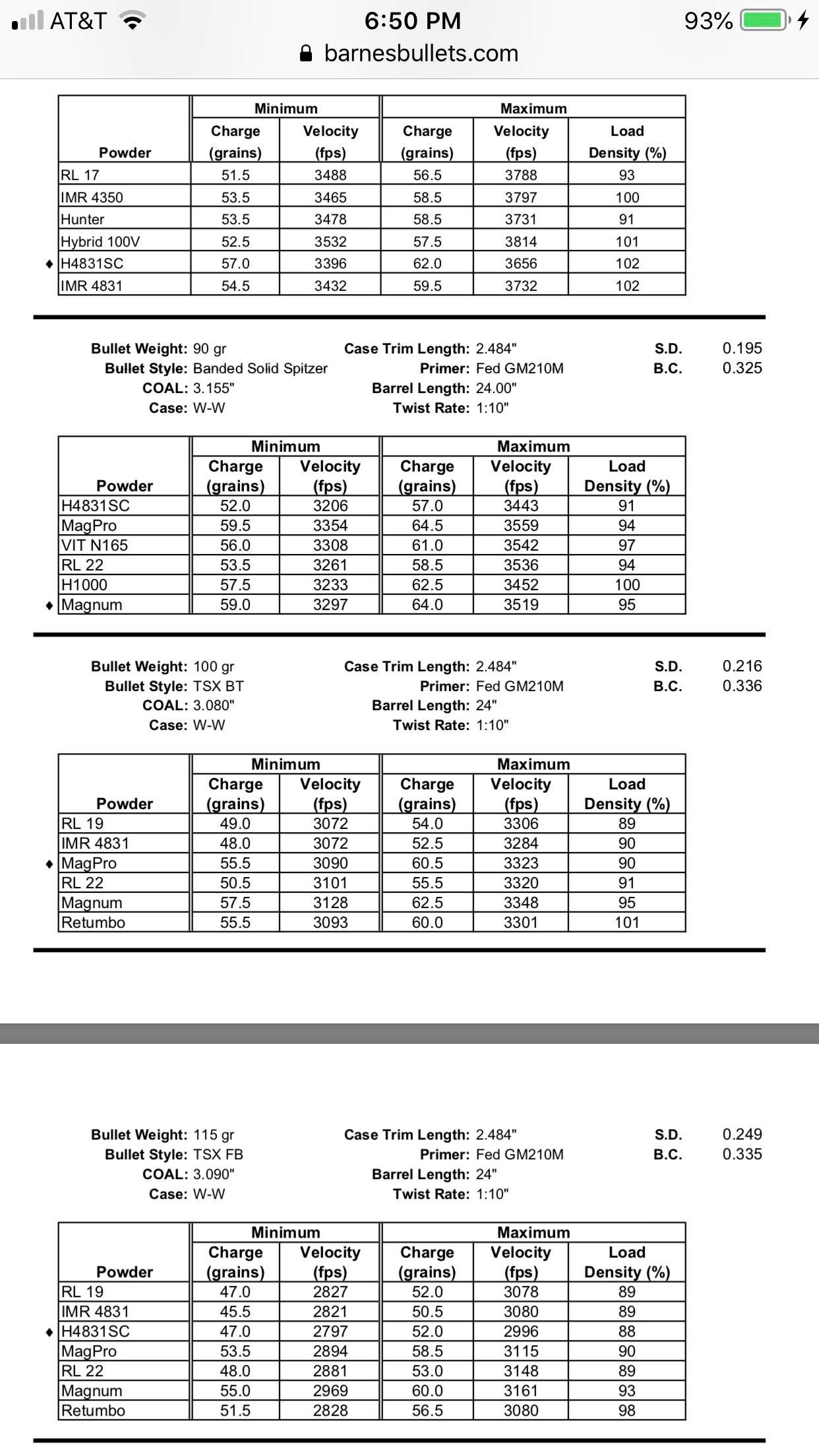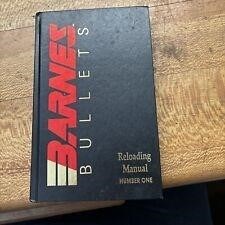
Barnes Reloading Manual PDF⁚ A Comprehensive Guide
The Barnes Reloading Manual, available in PDF format, offers a complete guide for reloaders using Barnes bullets. It provides updated load data, safety instructions, and covers various bullet types like TSX, TTSX, and LRX, ensuring precision and performance.
Availability and Access
Acquiring the Barnes Reloading Manual PDF can be achieved through various avenues. While not directly offered as a free download on the Barnes Bullets website, the company’s online resources frequently mention the manual and its updated load data. Many online forums and communities dedicated to reloading discuss the manual and potential sources. Third-party retailers may occasionally sell the manual in digital or physical formats, though availability can fluctuate. It’s crucial to verify the legitimacy of any third-party source to ensure you’re not receiving outdated or inaccurate information. Some websites offering free reloading manuals might include Barnes data, but always cross-reference with official sources to confirm accuracy. Remember that safety is paramount when reloading, and using verified data is essential. Therefore, exercising caution when sourcing this manual is recommended.
Barnes Reloading Manual Number 4⁚ Key Features
Barnes Reloading Manual Number 4 stands out for its comprehensive coverage of Barnes Bullets’ product line. This edition significantly differs from its predecessors, reflecting the evolution of Barnes’ bullet designs. The manual’s key feature is its detailed load data for various calibers and bullet types, including the renowned TSX, TTSX, and LRX lines. Beyond load data, the manual likely includes safety precautions and disclaimers, emphasizing responsible reloading practices. Expect clear instructions and potentially illustrative diagrams or charts to aid in understanding the reloading process. The manual’s focus on precision and performance is evident through its detailed explanations of ballistic properties and potential effects of various powder and primer combinations. While specific content may vary, the overall aim is to provide reloaders with the necessary information for safe and accurate ammunition creation using Barnes bullets. The manual’s value lies in its up-to-date information, reflecting the latest advancements in bullet technology.
Comparison with Previous Editions
Comparing Barnes Reloading Manual Number 4 to its predecessors reveals significant updates reflecting advancements in bullet technology and reloading practices. While earlier editions provided valuable load data, Manual Number 4 incorporates data for newer Barnes bullet designs, such as the evolution from TSX to TTSX bullets, and potentially includes information on newer calibers not present in previous versions. The layout and presentation might also be improved, with clearer charts, diagrams, and potentially updated safety guidelines. The inclusion of color illustrations, if present, would enhance the user experience. While the core principle of providing accurate load data remains consistent, the depth and breadth of information have likely expanded to encompass the broader range of Barnes bullets now available. The updated manual likely addresses any previously noted inaccuracies or omissions, reflecting a commitment to providing the most current and reliable information for reloaders. Expect a more comprehensive approach to safety, perhaps with added warnings or detailed explanations of potential risks, reflecting evolving best practices in the field. The overall improvement suggests a more user-friendly and technically advanced manual.
Bullet Types Covered in the Manual
The Barnes Reloading Manual PDF extensively covers a variety of their renowned bullet types, each designed for specific applications and performance characteristics. Central to the manual are likely details on the TSX (Triple-Shock X) bullets, known for their all-copper construction and reliable expansion. The TTSX (Tipped Triple-Shock X) bullets, featuring a polymer tip for enhanced ballistic performance, are also prominently featured, likely with load data for various calibers. The LRX (Long-Range X) bullets, optimized for extended ranges and accuracy, are another key component, providing data for long-distance shooting enthusiasts; Beyond these flagship lines, the manual might include information on other Barnes bullet types, such as the XPB pistol bullets, the MRX (Maximum-Range X) bullets (if still relevant), and potentially even older designs for completeness or historical reference. The level of detail for each bullet type would vary, encompassing specifications, ballistic coefficients, and recommended powder charges. The comprehensive nature of the manual aims to provide reloaders with a complete resource for all Barnes bullet offerings, regardless of intended application or hunting scenario.
TSX (Triple-Shock X) Bullets
The Barnes Reloading Manual dedicates a significant portion to its TSX (Triple-Shock X) bullets, renowned for their all-copper construction and exceptional performance. Detailed information on the TSX design is provided, highlighting its unique features that contribute to consistent expansion and deep penetration. The manual likely includes extensive load data for various calibers and bullet weights, catering to a wide range of firearms and hunting applications. Expect to find specific powder recommendations, primer types, and case dimensions for optimal performance with TSX bullets. The section might also include discussions on the ballistic characteristics of the TSX, such as its retained weight, wound cavity creation, and trajectory stability. Illustrations or diagrams further enhance understanding of the bullet’s design and its interaction with game. Safety precautions and warnings regarding high-pressure loads are also likely included, emphasizing the importance of safe reloading practices. The goal is to equip reloaders with the necessary information to achieve consistent accuracy and optimal results when using Barnes TSX bullets.
TTSX (Tipped Triple-Shock X) Bullets
The Barnes Reloading Manual provides comprehensive data on its TTSX (Tipped Triple-Shock X) bullets, a refinement of the renowned TSX design. This section likely details the addition of a polymer tip, explaining its impact on ballistic performance and terminal effects. Expect detailed load data tailored to the TTSX bullet’s unique characteristics, including recommended powder charges, primer types, and overall cartridge dimensions for various calibers. The manual probably contrasts the ballistic coefficients of the TTSX with its TSX counterpart, highlighting the advantages of the polymer tip in terms of long-range accuracy and improved expansion consistency. Expect visuals, such as diagrams or illustrations, showcasing the TTSX bullet’s construction and its expansion behavior upon impact. The text probably emphasizes the advantages of the TTSX in hunting situations, focusing on its enhanced accuracy at longer ranges and its reliable performance on various game animals. Safety considerations and warnings related to high-pressure loads are likely included to ensure responsible and safe reloading practices. The section aims to provide reloaders with the knowledge to utilize the TTSX bullet effectively and safely.
LRX (Long-Range X) Bullets
The Barnes Reloading Manual’s section on LRX (Long-Range X) bullets likely delves into the specific characteristics that make them suitable for extended-range shooting. This segment probably emphasizes the bullet’s monolithic copper construction, highlighting its resistance to deformation and fragmentation at high velocities. Detailed diagrams or illustrations might showcase the bullet’s design features, such as the boat-tail base and the polymer tip, explaining their contributions to aerodynamic stability and accuracy. The manual likely provides comprehensive load data specifically for LRX bullets, including recommended powder charges, primer types, and overall cartridge dimensions for various calibers. The text may compare the ballistic coefficients of LRX bullets to other Barnes offerings, demonstrating their superior performance at longer ranges. This section likely includes information on achieving optimal accuracy with LRX bullets, potentially covering topics like seating depth and bullet alignment. Safety precautions and warnings related to high-pressure loads are likely included, emphasizing responsible reloading practices. The section aims to empower reloaders with the knowledge to safely and effectively utilize LRX bullets for long-range shooting applications.

Other Barnes Bullet Types
Beyond the extensively documented TSX, TTSX, and LRX bullets, the Barnes Reloading Manual Number 4 likely includes data for a variety of other projectile designs. This section could cover bullets tailored for specific applications, such as the XPB (Xtreme Performance Bullet) line designed for pistol calibers, offering high performance in shorter barrels. Information on the discontinued MRX (Maximum Range X) bullets might be included for historical reference, showcasing their unique design features and performance characteristics. The manual might also detail the Varmint Grenade and other specialized bullets designed for varmint hunting, providing load data and insights into their effectiveness. Descriptions of the Barnes Originals, perhaps including variations in construction or design not found in the newer lines, could be included, offering a historical perspective and potentially specifying any unique loading considerations. The inclusion of these “other” bullet types allows for a comprehensive overview of the Barnes product line, providing reloaders with the information they need to select the appropriate bullet for their intended application. The extent of the information provided for each bullet type would likely depend on its popularity and continued relevance in the current market.
Powder and Primer Recommendations
A crucial aspect of the Barnes Reloading Manual PDF is its detailed powder and primer recommendations. This section likely provides comprehensive charts specifying suitable powders from various manufacturers for different Barnes bullet types and calibers. The data would be meticulously organized, possibly by bullet weight and cartridge, to facilitate easy reference and selection. For each powder-bullet combination, the manual would likely include a range of recommended charge weights, along with corresponding velocities and pressures. This information is critical for safe and accurate reloading. Beyond simply listing powder types, the manual probably explains the rationale behind specific recommendations, considering factors such as burn rate, pressure characteristics, and overall performance. The inclusion of primer recommendations, specifying appropriate primer types for different calibers and powder combinations, further enhances the safety and reliability of the reloading process. This detailed section guides reloaders in choosing the optimal powder and primer combination for specific Barnes bullets, ensuring consistent results and maximizing the performance of their ammunition.
Safety Precautions and Disclaimer
The Barnes Reloading Manual PDF undoubtedly emphasizes safety precautions throughout. A dedicated section likely reiterates the inherent dangers of reloading ammunition and stresses the importance of meticulous attention to detail. It would strongly advise users to possess a thorough understanding of reloading techniques before attempting any loading processes. The manual would likely include warnings about potential hazards such as over-pressure, which could lead to catastrophic equipment failure or serious injury. Detailed safety guidelines might cover proper handling of primers, powders, and projectiles. Specific instructions on using appropriate safety equipment, such as eye protection and hearing protection, would be included. Furthermore, the manual would clearly state a disclaimer, explicitly stating that Barnes Bullets, Inc. assumes no liability for injuries or damages resulting from the misuse of the provided data. The disclaimer would likely emphasize that the information is for guidance only and that users are solely responsible for their actions and the safety of their reloading practices. The manual would encourage users to consult additional resources and seek professional guidance if needed.
Online Resources and Load Data
Beyond the printed Barnes Reloading Manual PDF, readily accessible online resources significantly enhance the user experience. Barnes Bullets’ official website likely serves as a central hub, offering supplementary load data, frequently asked questions (FAQs), and troubleshooting guides. This online platform might feature interactive tools or calculators to assist users in determining optimal loads for their specific firearm and bullet combinations. Users can expect to find updated load data for newer cartridges or bullet designs not included in the print version, ensuring the information remains current and relevant. The website might also link to community forums or social media groups where reloaders can share experiences, tips, and insights. These online communities create a valuable space for collaboration and knowledge exchange. Access to videos, tutorials, or webinars might provide visual demonstrations of safe reloading practices. Furthermore, the site likely offers downloadable resources, such as updated charts or tables, complementing the information within the manual itself. These digital resources make the manual a dynamic and continuously evolving tool for the modern reloader.
Finding Alternative Sources

While the Barnes Reloading Manual PDF is a primary resource, several alternative sources can provide valuable supplementary information and perspectives. Other reloading manuals from reputable manufacturers often include load data for similar bullet weights and calibers, offering points of comparison and cross-referencing opportunities. Online forums and communities dedicated to reloading are invaluable for seeking advice, troubleshooting issues, and sharing experiences with other reloaders. These platforms often host discussions about specific bullet types, powder choices, and optimal load parameters. Reputable websites and blogs specializing in reloading may offer articles, tutorials, and reviews related to Barnes bullets, supplementing the information provided in the manual. These sources frequently provide detailed explanations of reloading techniques, safety protocols, and ballistic principles. Additionally, contacting Barnes customer service directly can provide answers to specific questions or concerns. Consulting with experienced reloaders or gunsmiths can provide personalized guidance and insights based on individual firearm characteristics and reloading practices. These diverse sources create a comprehensive network of information to enhance the reloader’s understanding and expertise.
Community Forums and Discussions
Engaging with online reloading communities offers significant advantages beyond the Barnes Reloading Manual PDF. These forums serve as dynamic hubs for sharing experiences, troubleshooting problems, and accessing collective knowledge. Discussions often focus on specific bullet types, such as Barnes TSX, TTSX, and LRX, allowing users to compare results, share load data variations, and discuss optimal powder choices. Experienced reloaders frequently contribute valuable insights, offering guidance on techniques, safety precautions, and interpreting ballistic data. The collaborative nature of these forums facilitates problem-solving, with members assisting each other in resolving challenges related to accuracy, consistency, or other reloading issues. Furthermore, these platforms provide a space for newcomers to ask questions, learn from experienced users, and gain confidence in their reloading skills. Access to a diverse range of perspectives and experiences broadens understanding and helps avoid potential pitfalls. The shared experiences and knowledge within these communities significantly enhance the learning process and promote responsible reloading practices. Remember, always prioritize safety and adhere to established guidelines.
Troubleshooting and FAQs
Even with the comprehensive Barnes Reloading Manual PDF, questions and challenges may arise. This section addresses common issues and provides troubleshooting guidance. Accuracy problems, for example, might stem from inconsistent bullet seating depth, improper powder charges, or variations in case preparation. The manual’s detailed instructions can help pinpoint the source of error. Understanding the relationship between components – bullet weight, powder type, primer, and case – is crucial. Incorrect powder charges are a serious safety concern, and the manual emphasizes careful measurement and adherence to recommended load data; Similarly, inconsistent case preparation, including variations in neck tension or primer seating depth, can affect accuracy and consistency. Addressing these issues requires careful attention to detail and a methodical approach. Online forums and communities can be invaluable resources for troubleshooting, offering peer support and expert advice. Remember, safety is paramount in reloading; if you encounter persistent problems, consult experienced reloaders or seek professional assistance before attempting further loads. The manual itself may contain a dedicated FAQ section; consult this section first for quick answers.